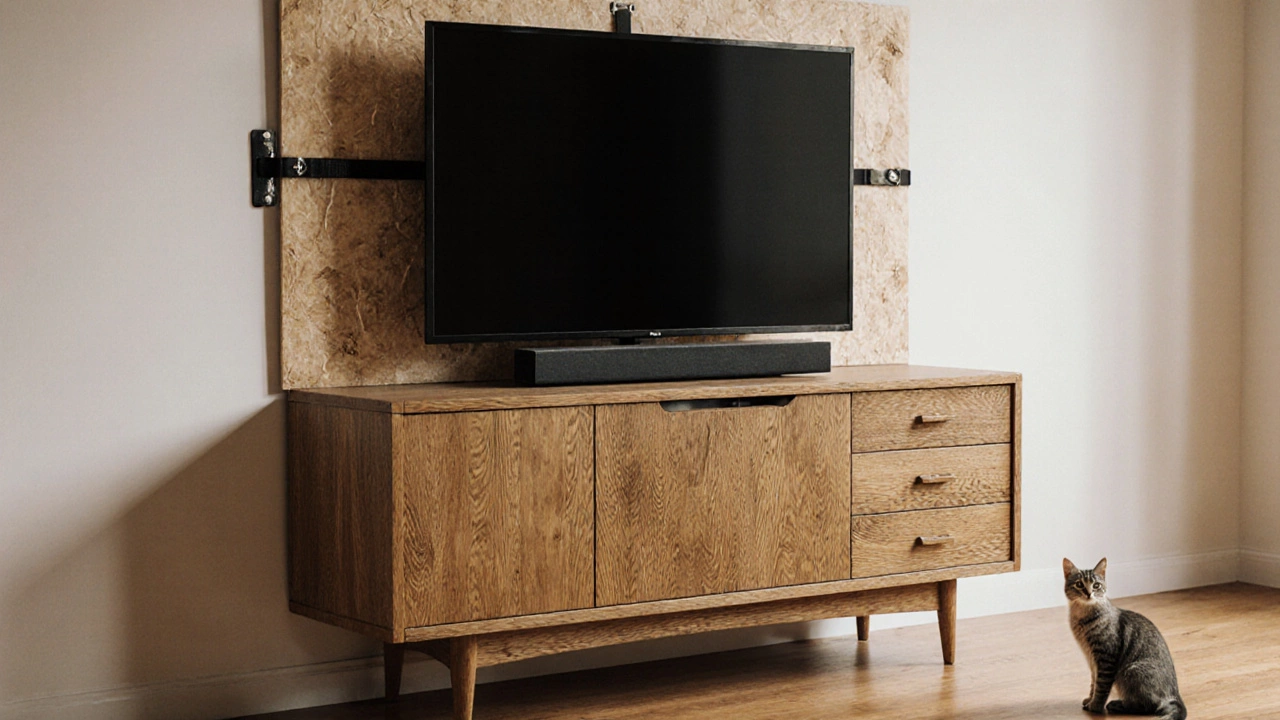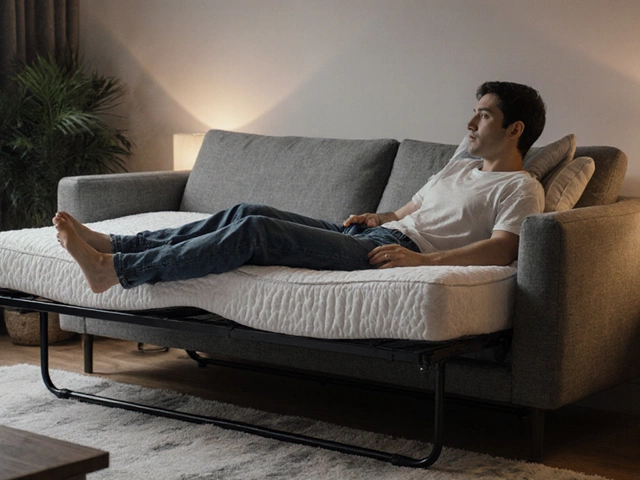TV on Dresser: Smart Placement Tips and What to Avoid
When you place a TV on dresser, a common workaround when space is tight or a dedicated stand isn’t available. Also known as TV on chest of drawers, it’s a practical solution for small apartments, dorms, or rooms where wall mounting isn’t an option. But it’s not as simple as just setting the TV on top. Many people don’t realize how much weight, depth, and stability matter—especially with modern flat-screen TVs that look light but can be surprisingly heavy on the bottom.
Not all dressers are built to hold a TV. A standard wooden dresser might look sturdy, but if it’s made from particle board or has thin legs, it can tip, crack, or wobble over time. The TV stand, a piece of furniture specifically designed to support a television with proper ventilation and cable management exists for a reason. But if you’re using a dresser as TV stand, a repurposed storage unit that wasn’t engineered for electronics, you need to check three things: weight capacity, width, and depth. Your TV should never hang over the edge—this creates a dangerous lever effect. If your TV is 55 inches wide, your dresser top should be at least 58 inches wide. And if your dresser is taller than 24 inches, you’ll be looking up at the screen, which strains your neck.
There’s also the issue of heat. TVs generate warmth, and dressers often have enclosed backs or poor airflow. Over time, trapped heat can damage internal components. And don’t forget about kids or pets. A wobbly dresser with a TV on top is a serious fall risk. Even if you think it’s stable now, a bump, a jump, or a curious cat can change everything. That’s why many safety experts recommend securing the TV to the wall with an anti-tip strap—even when it’s on a dresser.
Some people swear by this setup because it saves money and looks clean. A well-chosen dresser with drawers underneath can hide remotes, game consoles, and cables. But it’s not a one-size-fits-all fix. If you’re using a heavy 75-inch OLED or a bulky soundbar, you’re asking for trouble. Stick to TVs under 55 inches, make sure the dresser is solid wood or metal-framed, and never place it near a window where sunlight hits the screen. And if you’re moving the TV often, a dresser isn’t the best choice—those drawers aren’t made for frequent lifting and shifting.
What you’ll find below are real-world examples of people who’ve tried putting TVs on dressers—and what went right or wrong. Some turned old furniture into smart media centers. Others learned the hard way why weight limits matter. There are tips on how to measure your dresser, how to test stability, and what kind of TV mounts or pads actually help. Whether you’re renting, remodeling, or just trying to make do with what you’ve got, this collection gives you the facts—not guesses—so you can decide if a TV on dresser works for your space.
Can You Use a Dresser as a TV Stand? Practical Tips and Safety Checks
Using a dresser as a TV stand can work if it's sturdy, wide, and anchored-but most modern dressers aren't safe. Learn how to check stability, avoid risks, and when to buy a proper TV stand instead.





